https://www.youtube.com/watch?v=3wzz4Yhcduo
5 MORE FAILED FOOTBALL BOOT TECHNOLOGIES OF ALL-TIME
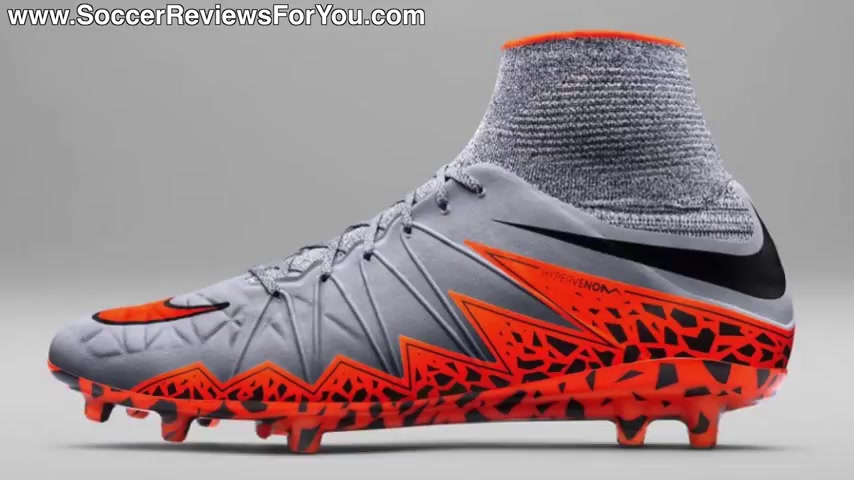
There's not a single brand out there that puts out a brand new product expecting it to fail .
But when you put a zipper on top of your football boots , what do you expect ?
What's going on guys , Josh , from soccer reviews for you dot com .
Bringing you five more failed football boot technologies .
I think it's clear to see that the modern boot industry is very much driven by new ideas , concepts , designs and most importantly , technology .
Everything in our life is based around new tech and some of the new tech that we get in football boots are truly revolutionary .
Some are just pretty good , some are not so great and then some of these new technologies are just complete fails .
Today , we're gonna be focusing on the fails .
If you guys do end up enjoying the video , don't forget to support it with a like and if you knew you're watching for the first time , don't forget to hit that subscribe button along with the little bell notification for daily videos on all the latest and greatest soccer gear with all that out of the way .
Let's highlight some failure .

The first boote fail is one that a lot of you guys were surprised was not featured in my original video on this topic .
But don't worry , guys , I was not gonna let them get away with such an epic fail without being called out .
Which , why the under armor spotlight two point oh pro A K A the zipper boot makes this list for obvious reasons .
Now , under armor is one of those brands that does not have what I would consider to be a very strong reputation in the football boot industry .
And a lot of that is due to the fact that they just haven't been a brand for a very long time , let alone making football boots .
And in the very early days , they had some pretty terrible boot releases , but they were just bad in regards to quality materials , not so much in regards to technology .
Now , this is the spotlight too , the original spotlight .
I just didn't think it was all that great .
This took a completely different direction , but one that was certainly not better .

And really my big question with this particular boot is how the heck they came to the decision that putting a zipper across the top of a football boot simply for the sake of sealing up a lace cover would be a good idea because it's not , here's the only logical explanation that I could come up with .
They wanted to incorporate a lace cover on their new boot , which they did with the under armor .
Spotlight two point oh .
What's the problem with the lace cover though ?
That is that it covers the laces to where loosening them and tightening them , putting the boots on and taking them off can be a bit of a struggle , at least more difficult than if the boot didn't have a lace cover .
And that's because you can't open it up .
So how do you open up a lace cover ?
You add a zipper , unzipped the boots and now you have easy access to the internal lacing system which this boot does have .
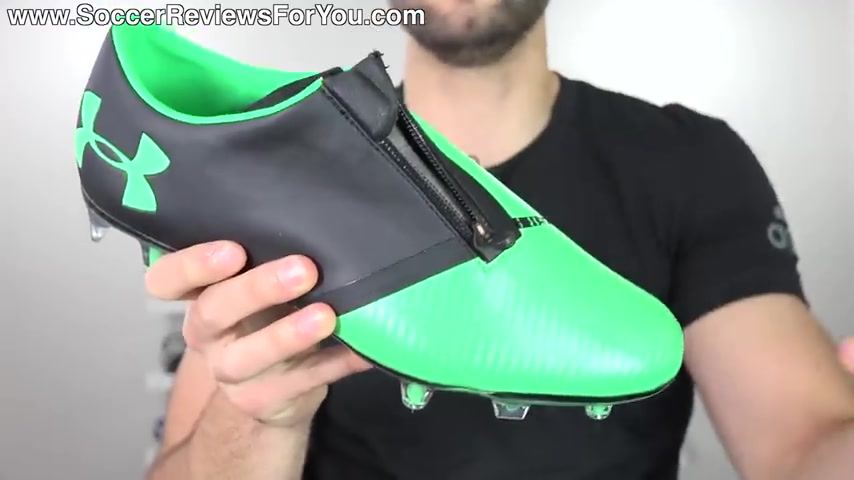
There was a lot of confusion when this came out that people thought that the zipper was actually what was tightening and loosening the boots .
It's simply there to open and close the lace cover all the structure .
All the lockdown is coming from the internal lacing system that is covered up by way of a zipper , boot tech fail .
Number two is not so much just a singular technology but a boot concept as a whole that honestly , I thought was a really cool concept , a very interesting idea , but one that unfortunately did not work out .
And that is the Puma Evo speed 1.4 S L running with the concept of being as light as possible while also sacrificing durability .
Now , I think it's safe to say that the modern football boot industry has really trended towards boots getting lighter and lighter .
And that's mainly because that's what the market has demanded based on new boots that have come out over the years .

And Puma has been one of those brands that's always been on the leading end of , I guess , pushing the boundaries of how lightweight a football boot can be .
Some of the early V series S L models were just remarkably lightweight for the time .
They were very expensive , of course , and not super durable , but people were willing to pay the price to have that super super light feel .
But with the Puma Evo speed 1.4 S L , they took things to the next extreme in a size 9.5 US and Evil speed 1.4 S L weighs in at about 3.8 ounces .
The equivalent of around 100 and seven g essentially weightless .
But there was one problem and that is that they would only last 10 uses .
Maybe you might be asking yourself how is Puma able to make a boot that light ?
Well , they basically made everything as thin as possible .
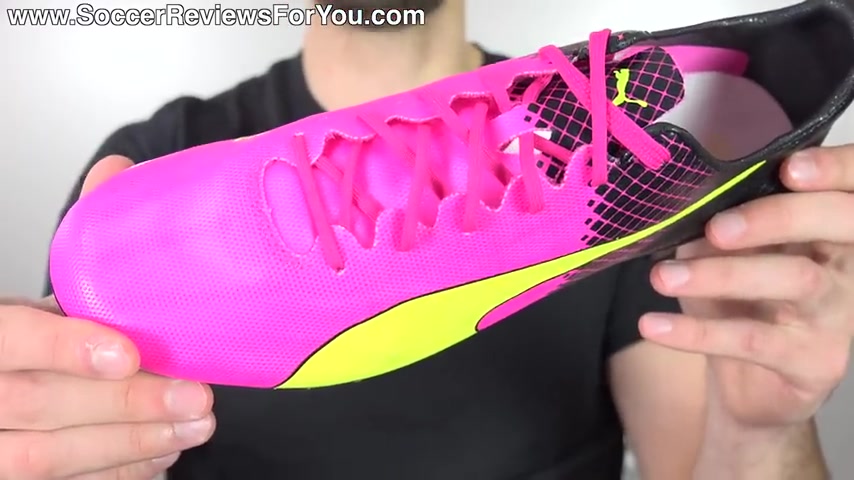
The upper is a textile base that is so thin that it's pretty much see through with a speed frame reinforcement , which is another super thin , basically translucent layer of textile in kind of a webbed shape that fills in the underside of the upper to give it some kind of structure .
Because basically this is like wearing paper on your feet , partner that with a soul plate that is basically a super thin plastic that almost has no structure to it whatsoever , but still is quite wearable and then firm ground studs that are long , all things considered only three studs at the back to shave as much weight as possible .
But to be fair , this is a boot that legitimately does perform the part , especially if you're looking for something super lightweight and super thin and there really wasn't anything thinner or lighter than these .
Here's the problem though , they just aren't durable at all .
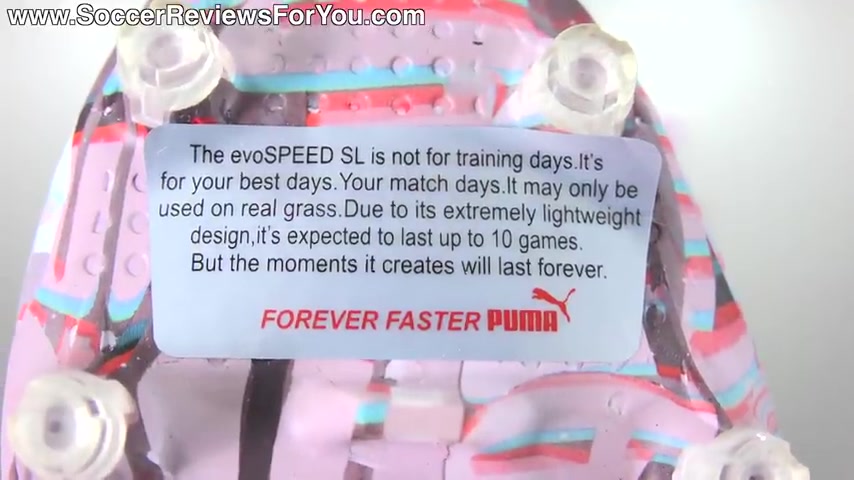
They came with a sticker on the bottom that essentially let you know that these were made specifically to be worn in matches , not in training .
Because if you wore them in training , they would most likely break if you wore these boots specifically in matches .
It's likely that they would last you about 10 games and they cost $300 as you might expect .
People did not buy them .
In fact , the initial sales were so bad based on that 10 game warning that they actually edited the warning sticker that comes on the boots to read as follows .
The ego speed S L is not for training days .
It's for your best days .
Notice the typo , your match days .
It may only be used on real grass and in fair weather conditions , a non compromised lightweight proposition .
This product is about speed , not endurance , but the moments it creates will last forever love the font getting smaller so they can fit it in the rectangle and I must say the experience of playing in these boots is unlike anything else I've ever tried .

It legitimately is super , super unique .
It's like wearing no boots at all .
They are paper thin to the point where you kick a ball and it feels like you're not wearing any shoes at all .
The traction is really aggressive but these really are made for premium fields .
If the ground you're playing on and it has to be natural grass .
If you wear these on A G , expect them to last like seven minutes on natural grass though , if the ground has any kind of firmness whatsoever , the stud pressure is tremendous based on the sole plate being paper thin and really having no rigidity to it whatsoever .
But if you can forget about the fact that your boots are $300 and they're only going to last maybe 10 uses , the experience is unlike anything else .
It's also worth noting that I personally went through two different pairs of vivo speed 1.4 S L s .
The first pair lasted me about two wears and the second pair lasted me about five wears .
And that's only because I kind of knew what to avoid what types of fields to play on after the first pair that only lasted me two wears .

So if you're doing the math here , that is $600 for two pairs of boots that I got to wear seven times in total , not a very good investment .
So it's a fail which brings us to boot tech fail .
Number three , the Adidas F 50 tune it system starting off with the very first one , the F 50.6 .
But honestly , every generation was more or less a fail .
Now I did feature the F 50.8 tut in my original fail video for the translucent plastic heel liner that is a fail for obvious reasons .
But the tune system as a whole , while a very cool concept similar to the EVO speed is one that was not well executed and just quite simply didn't work that great .
It was more of a hassle than it was actually a beneficial technology .
So in 2006 Adidas took their F 50 line and turned it into the F 50.6 tut , which looked like this .
The concept behind the tune system actually sounds really smart .
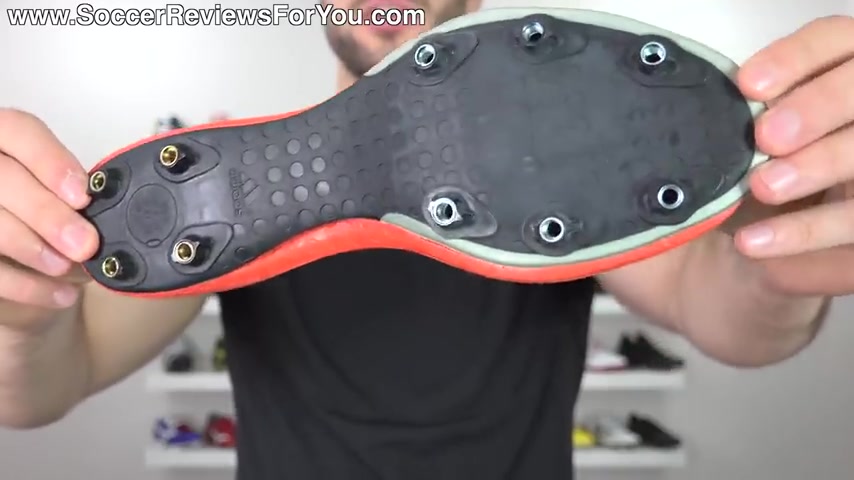
And that's a fully modular football boot where basically you could transform the boot with these interchangeable pieces for the specific playing conditions on any given day , firm ground , hard ground or soft ground .
And there's certain things you could change out as well , the base as well as the upper essentially football boot legos .
You buy an F 50.6 tune it starter kit and that would include an upper like this , the chassis which looked like this originally would have included the insole the soul plate and then obviously the screw in points for the studs themselves .
This was the second generation chassis that they introduced , which was by the way , a lot better than the original but still not very good where they separated the chassis and the insole as two different pieces .
You've got a set of firm ground studs , hard ground studs and soft ground studs along with a stud wrench for all three different studs to put everything together .
If you've never seen this concept before , you're probably thinking to yourself , that's an amazing idea .

You buy one pair of boots and you have a firm ground , a hard ground and a soft ground boot all in one by way of these interchangeable pieces .
But if you ever actually got to wear a pair of F 50.6 Tunis or really any Tune model for that matter , you would have realized that it wasn't quite as good as it seemed to be .
Now , keep in mind that I am talking from first hand experience because back in 2006 , when the F 50.6 Tune first came out , I had a pair as a kid .
I was absolutely stoked on them .
But soon after actually getting to wear them , I realized that they were not all that they were made out to be .
The first thing that I noticed about my new F 50 point 0.6 Tunis is that they just weren't very comfortable .
The shape of the upper was unusual .
The amount of extra bulk across the top of the foot .
With this really spongy lace cover not ideal this stitch through the front of the toe box area was super , super uncomfortable .
I got blisters on the front of my toes , which I had never experienced up until that point .
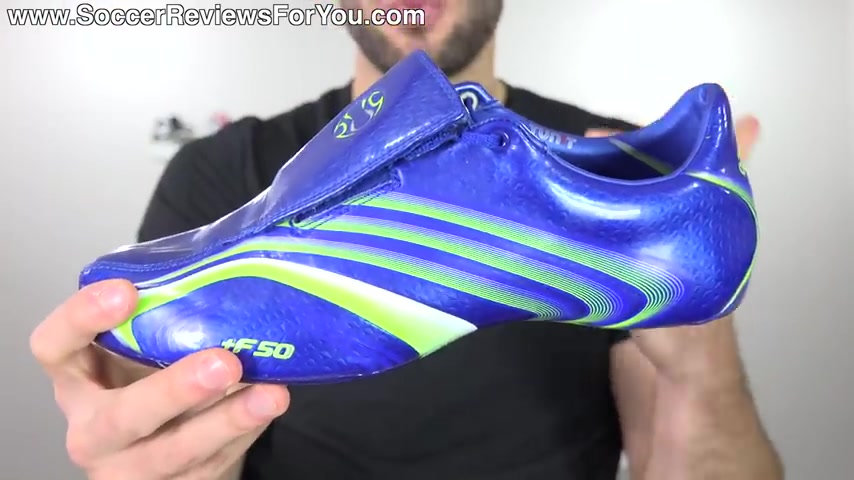
And as a whole , the overall shape of the boot just wasn't very form fitting .
It's kind of an awkward shape which I think is pretty clear to see just from looking at the boots from the outside .
Also , the soul plate was extremely stiff .
The chassis element that housed all the screw in points for the studs themselves , essentially allowing everything to come together and attach itself to the upper .
Those elements had to be made from a thicker , much more rigid , hard plastic material that we typically would not find as much of on a regular football boot sole plate .
So the end result was a soul plate that was extremely stiff , pretty much no matter what .
And once you started to get used to the stiffness of the soul plate , it would crack in half and you'd have to buy a new one and start all over .
And then there was the excitement of actually putting the boots together , screwing in the studs .
Obviously , you could go with the full F G H G or S G set ups that were included .
But because you put the studs in one at a time , it gave you the option of actually creating your own custom stud pattern .
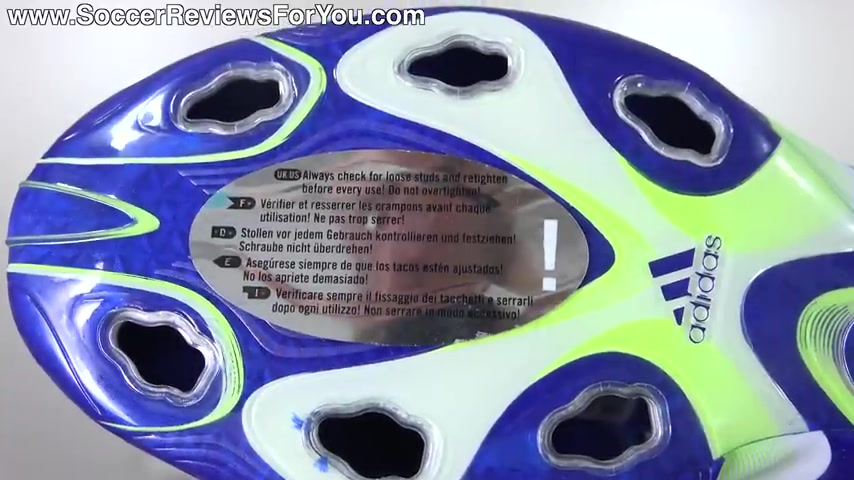
You could actually credit the F 50 tune it for all the mix .
So soft ground stud patterns that we have today because you could actually do that on this boot before that even available metal studs in certain points , plastic studs and other points .
The problem was that actually screwing in the studs and then keeping them on the boots was a major hassle .
And next to impossible , the boots came with this warning which reads as follows .
Always check for loose studs and re tighten before every use do not over tighten .
So basically , Adidas gives us two warnings that pretty much contradict themselves .
One being make sure that the studs are tight before playing in them , but also make sure that the studs aren't too tight .
Exactly .
What is the correct tightness for each individual stud ?
Well , that's for you to figure out if the studs aren't tight enough , you're going to lose them while you're playing and you're not going to know that they're missing until you look down at your feet .
At which point .
Good luck trying to find this little stud somewhere in the grass because it's next to impossible .

Also , they don't include extra studs , the boots .
So if you lose one , you can't just buy one , you have to buy a completely new set .
But what happens if you over tighten the studs ?
Well , bad things tighten them too much and you'll find a couple of different things can happen .
One that you'll actually strip the studd itself because basically it's just a little screw .
At which point again , you'll have to buy a new set of studs or even worse .
And this was a very common problem .
You could strip the screw in point on the chassis at which point , either the stud won't stay in place or it'll be completely stuck in place with the upper attached and everything where basically you'd have to tear them apart and basically break the boots in order to get everything apart again and then buy new boots .
It's like gluing your legos together and then trying to disassemble it .
It's just not a very effective system .
And then there's the weight of the tune system .

The F F 0.6 upper with the standard chassis and F G studs in a size nine US weighs in at 11 ounces .
That's more than a copa in the same size .
But this is supposed to be a speed boot just to further prove my point .
You might be wondering why I didn't put together the F 50.6 tune it during this video .
And that's simply because I was actually afraid of breaking them simply based on it , sitting around for so long , not put together .
I just didn't want to take the chance .
So basically , the tune it system was an amazing concept that unfortunately just wasn't well executed .
Too many things could go wrong .
And too many things often did go wrong with any generation of this particular boot .
And we are kind of seeing a comeback of the modular football boot in the form of the Adidas glitch .
Granted it's a much more simple modular concept with only two interchangeable pieces .

And while I'm not a huge fan of the glitch concept as a whole in comparison to the regular in line boots , Adidas currently makes right now , I do think that it's a much better boot than the F 50 tune it ever was , which brings us to the fourth boot tech fail .
And that is the carbon fiber soul plate of the Nike Mercurial Vapor four S L one of the coolest looking soul plates ever but definitely a fail .
If there's one material that gets associated with high quality and high tech products , it's carbon fiber .
So you can imagine back in 2008 when Nike released the Mercurial Vapor Four S L A super light variant of the standard Vapor four that introduced a carbon fiber heel counter and Soul plate that looked absolutely incredible .
It led people to believe that this was basically the boot of the future and to a certain extent it was , you're probably wondering why is this a fail then ?
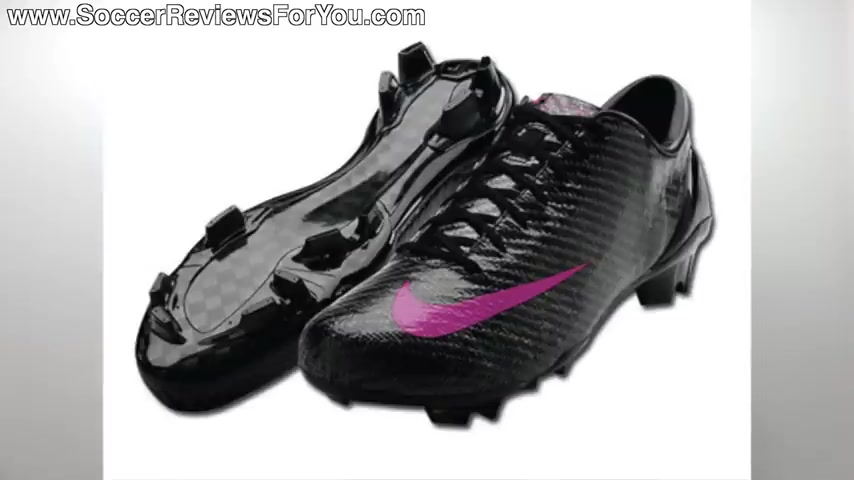
Well , that's because 10 out of 10 carbon fiber soul plates on the vapor four S L would crack almost immediately after being used .
Now , technically , the vapor four S L was not the first boot to feature this carbon fiber soul plate .
Nike had launched it in limited quantities in the form of the Mercurial sl which featured a carbon fiber upper as well as a carbon fiber soul plate .
They were super limited and super expensive .
So most people did not get their hands on them .
It wasn't until the vapor four sl where the carbon fiber Soul plate was available to the general public as these were just general release boots .
Here's the thing though , as cool as it looks as good as it actually feels .
It would just crack immediately and it wouldn't crack in the spot where you might expect in the four ft where these soul plates normally flex , they would actually crack right here at the base of the mid foot , this little kind of rib structured area for whatever reason , that's exactly where it would crack .

And this was a boot that was extremely expensive when it first came out .
So for people to spend what I believe was about $300 at the time for a vapor four , wear them twice and then see the sole plate cracked .
It just wasn't a good situation .
Of course , if your soul plate did crack , you could go through Nike's warranty program and they would replace them for you , but it would continue to be an issue pretty much for the entire run of the vapor four sl I was a teenager when the vapor four .
SL was an in line model and I had the regular vapor four , which by the way , is an extremely uncomfortable boot .
For whatever reason , the SL variation was just a lot more comfortable , not to say that these are super comfortable by today's standards .
By any means , the current Mercurial are way more comfortable than any of these older ones ever were .
But because of these were so expensive when they were brand new , I just wasn't able to afford them later on once we got the Super Fly one that was even more expensive , these eventually got discounted .
And I finally got a pair .
I actually had them in this exact Marina volt color way .

Super super excited wore them to practice .
And on that very first practice , the soul plate cracked and that was it for my Vapor Four S L experience to Nike's credit .
They did continue with the carbon fiber soul plate that we got on the Super Fly 123 and four , even on some of their elite models that crossed over into the T M O C R 360 90 lines .
And basically after the Vapor four sl the cracking carbon fiber soul plate was not nearly as big of an issue as it originally was with the vapor four S L .
So they did manage to fix this design eventually .
But the fact that the entire run of the very first model of the soul plate would pretty much crack no matter what , it just wasn't necessarily a great look , which is why this goes down as pretty much a complete fail , which brings us to the final boot tech fail on this list , which comes from a boot that was far from a fail .
In fact , this was some people's favorite boot of all time , but one technology included was definitely a fail .

And that was the Adidas Predator absolute With the Power Pulse technology , the football booty industry is very much about strong marketing .
And when you think about power boots , a lot of people immediately think about the Adidas Predator with the predator absolute being just the latest and greatest in the long going and very popular Adidas Predator lineup .
Now this particular boot incorporated all the standard predator elements , the kangaroo leather upper , the rubber eye striking elements of the fold over flap tongue with the elasticated the external heel counter the same classic stud pattern , even the same split sole that they were using at that particular time on the Predator series .
But there was one new innovation and that was the Power Pulse technology .
That was actually a part of the insole that you could see through a translucent window in the forefoot of the soul plate .
This is Power Pulse technology .
I know it's a little underwhelming .
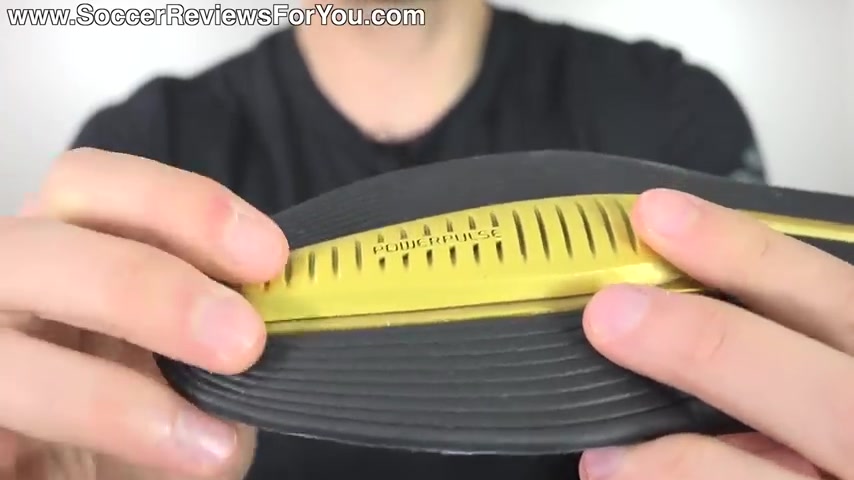
Basically what you're looking at is a weighted bar .
It's a special type of metal as far as I know on this particular model , they never really specified exactly what this material was .
But basically , it's a firm bar that does have some flex to it .
That's why there's a little cut outs there that weighs 40 g .
And the reason why it weighs 40 g is it's adding weight to the point of contact where you strike the ball , hit the ball in the correct point of contact exactly on the predator element where the power pulse technology was located underfoot .
And that extra 40 g of weight would increase the ball speed on your shot by 2% in comparison to past predator models and increase it by 5% in comparison to any other football boot .
Did it actually work ?
No .
And would you really be able to tell if the speed of your shot was 2% faster ?
Probably not .
Now , the reason why power pulse technology in my opinion was a fail is not because it's bad .

It really doesn't have much of an impact at all .
But think about this for a second , especially based on what Adidas is doing right now and what every brand is doing as far as what's trending in football boots .
If any brand were to come out with a product and say we're going to add weight to the boots in order to increase performance , how many people would go for that ?
The answer to that question is nobody like I talked about earlier , the football boot industry as popular as the predators were at this point in time , was very much trending towards boots , getting lighter and lighter rather than heavier and bulkier , which is kind of what the predators were at that point in time .
It's part of the reason why the popularity started to decline and the Mercurial started to gain a lot of popularity just because that's what people really wanted at that point in time .
And Adidas themselves didn't even have full confidence in this particular technology .

And that included with every pair of predator absolutes , they included an extra set of insoles that had a standard hollow plastic power pulse to fill in the little gap in the soul plate that basically weighed nothing at all .
So if you didn't want the Power Pulse technology , you didn't have to have it and credit to Adidas on this tech because they didn't abandon it immediately after the predators salute .
It was followed by the power swerve , which obviously featured pretty much all the same predator elements that we would expect .
But instead of a solid weight for the power pulse technology , they changed it up and made the weight actually transfer inside of the insole .
The power pulse system was now tung in powder , 40 g of it to be exact that could actually transfer inside of basically this hollow compartment that sat underneath your foot .
So not only were you getting the extra weight at the point of contact , you were getting extra weight transfer as well with of course , claim numbers that would increase the power of your shot .

It didn't , but I really do think that this is a cool concept but based on the lack of popularity , still a fail .
And that concludes five more football boot technology fails .
If you guys enjoyed the video , don't forget to support it with a like if you have any suggestions for other top five videos you'd like to see or any questions regarding any of the boot tech that I talked about in today's video because there was lots of information that I went over .
Feel free to ask your questions and leave your suggestions down below in the comments .
Any questions I'll try to answer as soon as I possibly can .
If you're not subscribed already , be sure to hit that subscribe button for daily videos on all the latest and greatest soccer gear .
You can find all my social media information link down below in the description as well .
Other than that guys hope you enjoyed the video and as always , thanks for watching .
Are you looking for a way to reach a wider audience and get more views on your videos?
Our innovative video to text transcribing service can help you do just that.
We provide accurate transcriptions of your videos along with visual content that will help you attract new viewers and keep them engaged. Plus, our data analytics and ad campaign tools can help you monetize your content and maximize your revenue.
Let's partner up and take your video content to the next level!
Contact us today to learn more.